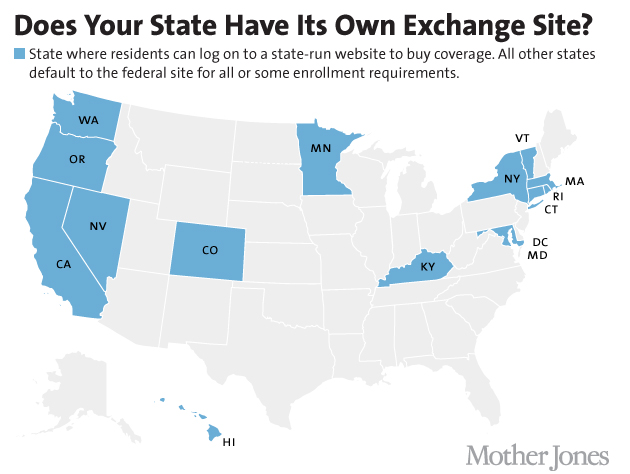Most people remember the debut of healthcare.gov as an IT disaster of epic proportions. Fortunately, the site was eventually fixed and went on to register millions of Americans for healthcare, including many who had not previously had insurance. But many state exchanges struggled too – Hawaii, Maryland, and Massachusetts famously among them.
Only a few states managed to launch their sites without a hitch. What made the difference? The same things that help any project succeed: simplicity, lots of testing, and solid relationships with vendors and other stakeholders.
Top Three Exchanges
Three exchanges that did well across the board – enrolling new members, not crashing during peak use, and avoiding major glitches – include Kentucky, Connecticut, and Rhode Island. All three relied on the consulting prowess of Deloitte to implement their sites, which have since been replicated by other states.
Simplicity
Simple interfaces serve two purposes: for the exchanges, they allow for additional testing as functionality is added over time, letting developers focus on the central systems before deployment. For consumers accustomed to one- or two-click online shopping, simple interfaces and processes makes it more likely that they will complete their enrollment online instead of over the phone (or opting out entirely and paying the tax penalty).
Some of the highest-ranking state sites according to criteria designed by HealthPocket.com were able to sign up new users in four (Connecticut) to six (Rhode Island) “clicks.” Some of the most buggy, such as Minnesota’s MNsure site, required 18.
Additionally, for customers accustomed to having only one plan (their employer’s), simple comparisons that can be accessed without giving up personal information are increasingly important. Most people are simply not familiar with the options available, so clear, accessible information online can make a huge difference as to when and how people enroll. Hawaii’s site, the Hawaii Health Connector, did not allow users to compare plans online at all.
Testing
Some states – and possibly the federal exchange itself – spent as little as two weeks on testing. Kentucky developers, on the other hand, spent three months testing the Kynect site, improving functionality and ensuring solid “Plan B” options in case anything went wrong. When the account-creation system was temporarily overwhelmed with requests on opening day, scalable architecture and virtual machines were in place to resolve the problem quickly.
The office of the exchange performed their own testing, complementing the testing done by contractor Deloitte, and they involved testers from insurance companies and the Medicaid office to make sure that the entire customer base would be well-served. Kentucky also focused on usability, eventually developing 1,200 guidelines for the exchange through numerous Joint Application Development sessions.
Vendor Relationships
Several of the most troubled sites, including Hawaii’s, used the same Canadian contractor that developed Healthcare.gov. Maryland also blamed many of its problems on their main contractor, Noridian Healthcare Solutions, as well as IBM, revealing a potentially less-than-ideal working relationship.
But while vendor relationships are important to the success of a project, some developers have pointed out that in most companies, the buck stops with corporate leadership, not outside consultants. Some states, such as Maryland, kept their negotiations behind closed doors, so taxpayers and even some members of related committee had no idea who was hired or how much they were going to charge.
Kentucky, on the other hand, turned the exchange office into a state agency and engaged key stakeholders, including other governmental offices and insurance companies, frequently throughout the process.
Although there are still a few back-end issues with the site, Kentucky’s approach — simple, well-tested, and based on strong relationships between invested parties — resulted in a functional, localized solution that has clearly paid off. The site eventually registered more people for Medicaid and private insurance per capita than any other state, making the Kentucky health insurance exchange one of the most successful in the nation.


